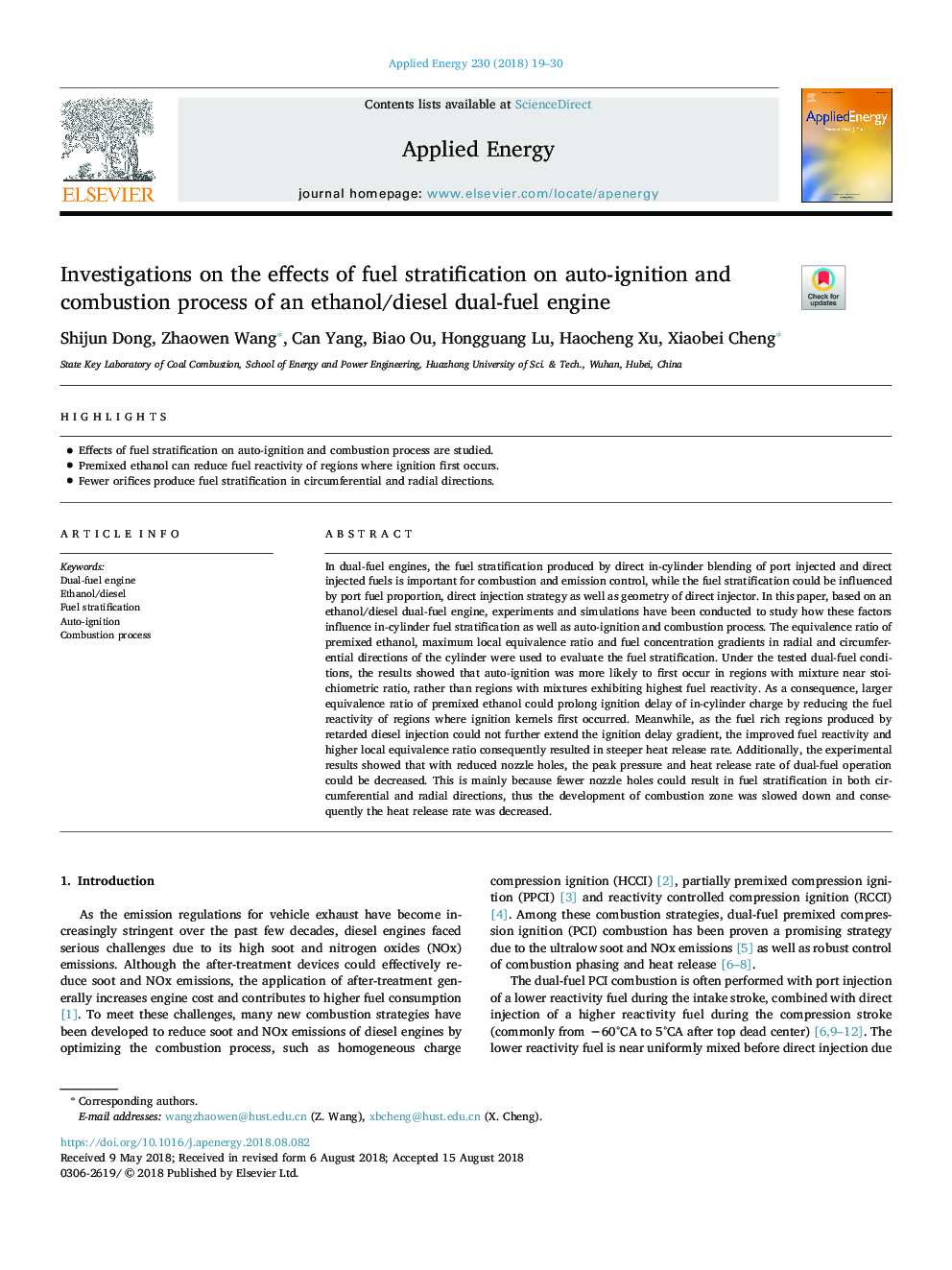| کد مقاله | کد نشریه | سال انتشار | مقاله انگلیسی | نسخه تمام متن |
|---|---|---|---|---|
| 8946981 | 1645543 | 2018 | 12 صفحه PDF | دانلود رایگان |
عنوان انگلیسی مقاله ISI
Investigations on the effects of fuel stratification on auto-ignition and combustion process of an ethanol/diesel dual-fuel engine
ترجمه فارسی عنوان
بررسی تأثیر مقیاس سوخت در فرایند احتراق خودکار و فرآیند احتراق موتور دوتایی اتانول / دیزلی
دانلود مقاله + سفارش ترجمه
دانلود مقاله ISI انگلیسی
رایگان برای ایرانیان
کلمات کلیدی
موتور سوخت دوگانه اتانول / دیزل، طبقه بندی سوخت، اشتعال خودکار، فرآیند احتراق
موضوعات مرتبط
مهندسی و علوم پایه
مهندسی انرژی
مهندسی انرژی و فناوری های برق
چکیده انگلیسی
In dual-fuel engines, the fuel stratification produced by direct in-cylinder blending of port injected and direct injected fuels is important for combustion and emission control, while the fuel stratification could be influenced by port fuel proportion, direct injection strategy as well as geometry of direct injector. In this paper, based on an ethanol/diesel dual-fuel engine, experiments and simulations have been conducted to study how these factors influence in-cylinder fuel stratification as well as auto-ignition and combustion process. The equivalence ratio of premixed ethanol, maximum local equivalence ratio and fuel concentration gradients in radial and circumferential directions of the cylinder were used to evaluate the fuel stratification. Under the tested dual-fuel conditions, the results showed that auto-ignition was more likely to first occur in regions with mixture near stoichiometric ratio, rather than regions with mixtures exhibiting highest fuel reactivity. As a consequence, larger equivalence ratio of premixed ethanol could prolong ignition delay of in-cylinder charge by reducing the fuel reactivity of regions where ignition kernels first occurred. Meanwhile, as the fuel rich regions produced by retarded diesel injection could not further extend the ignition delay gradient, the improved fuel reactivity and higher local equivalence ratio consequently resulted in steeper heat release rate. Additionally, the experimental results showed that with reduced nozzle holes, the peak pressure and heat release rate of dual-fuel operation could be decreased. This is mainly because fewer nozzle holes could result in fuel stratification in both circumferential and radial directions, thus the development of combustion zone was slowed down and consequently the heat release rate was decreased.
ناشر
Database: Elsevier - ScienceDirect (ساینس دایرکت)
Journal: Applied Energy - Volume 230, 15 November 2018, Pages 19-30
Journal: Applied Energy - Volume 230, 15 November 2018, Pages 19-30
نویسندگان
Shijun Dong, Zhaowen Wang, Can Yang, Biao Ou, Hongguang Lu, Haocheng Xu, Xiaobei Cheng,
